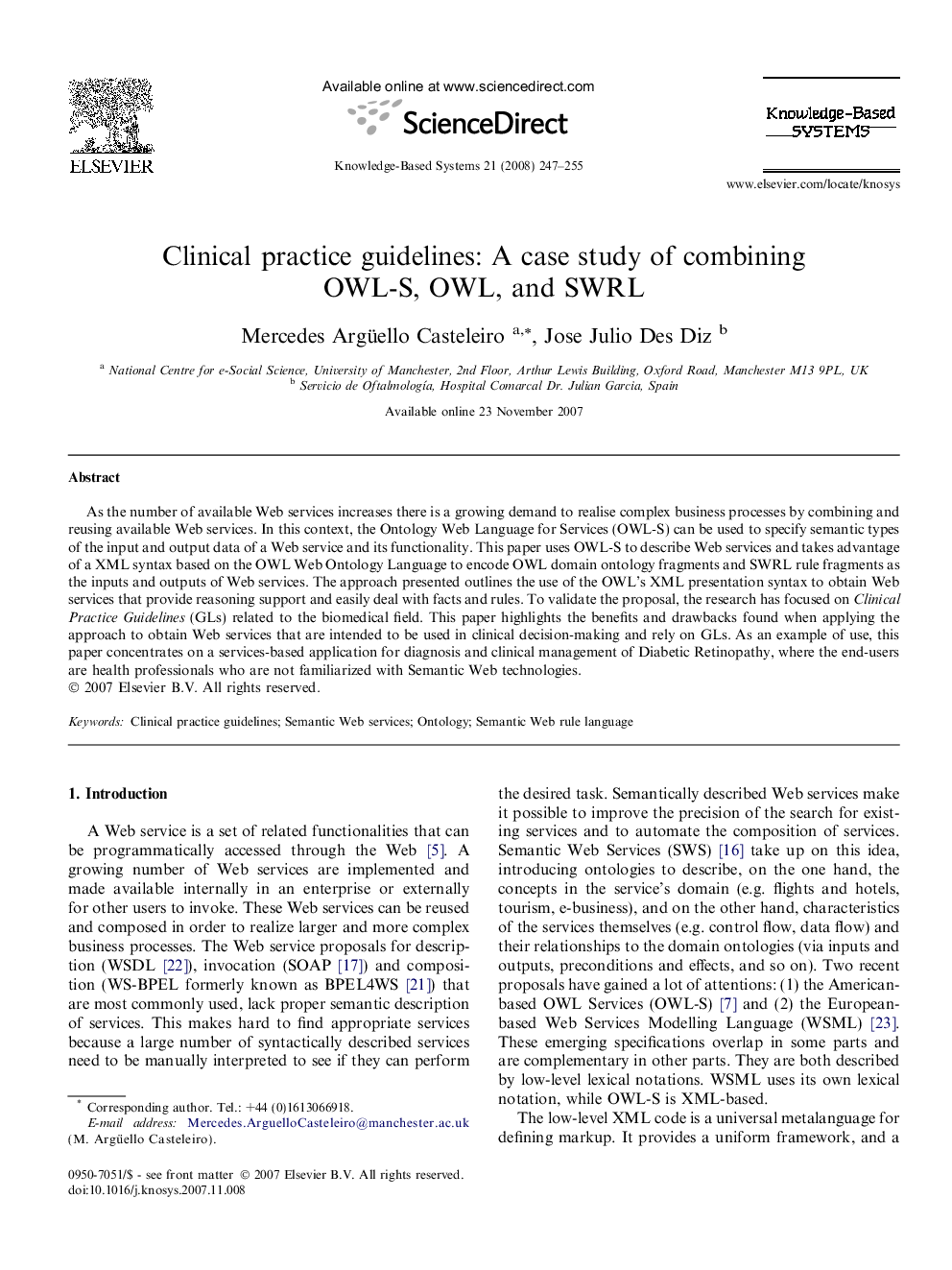| Article ID | Journal | Published Year | Pages | File Type |
|---|---|---|---|---|
| 403197 | Knowledge-Based Systems | 2008 | 9 Pages |
As the number of available Web services increases there is a growing demand to realise complex business processes by combining and reusing available Web services. In this context, the Ontology Web Language for Services (OWL-S) can be used to specify semantic types of the input and output data of a Web service and its functionality. This paper uses OWL-S to describe Web services and takes advantage of a XML syntax based on the OWL Web Ontology Language to encode OWL domain ontology fragments and SWRL rule fragments as the inputs and outputs of Web services. The approach presented outlines the use of the OWL’s XML presentation syntax to obtain Web services that provide reasoning support and easily deal with facts and rules. To validate the proposal, the research has focused on Clinical Practice Guidelines (GLs) related to the biomedical field. This paper highlights the benefits and drawbacks found when applying the approach to obtain Web services that are intended to be used in clinical decision-making and rely on GLs. As an example of use, this paper concentrates on a services-based application for diagnosis and clinical management of Diabetic Retinopathy, where the end-users are health professionals who are not familiarized with Semantic Web technologies.
